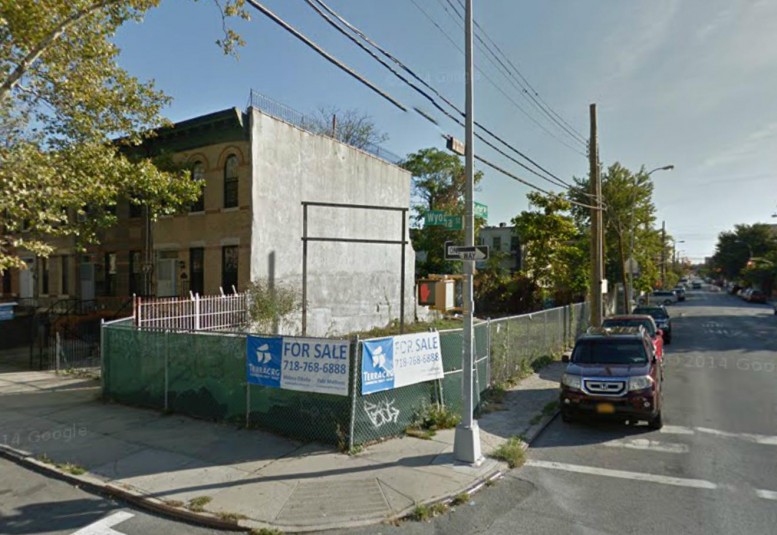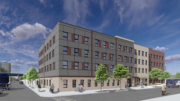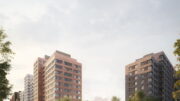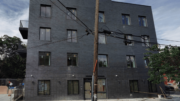The city hopes to kick off its big East New York rezoning within the next few weeks, and it plans to subsidize the construction of 1,200 new affordable apartments in the transit-rich area near Broadway Junction. Meanwhile, market-rate development is slowly growing in the southern half of the neighborhood, where new construction comes in the form of small three- and four-story buildings—the only thing that pencils out right now.
Yesterday, a new building application was filed to construct a three-story, six-unit building at 727 Sutter Avenue, on the corner of Bradford Street. The 45-foot-tall development will hold 4,391 square feet of residential space, with two apartments per floor. The units will measure just 731 square feet each.
The developer, Meir Mizrachi, filed plans in June for an identical three-story building next door at 717 Sutter Avenue, on the corner of Wyona Street. Charles Mallea is the architect of record for both buildings. The two properties are vacant and changed hands for similar amounts of money, although several years apart. No. 727 sold for $150,000 in 2013, and the previous owner of No. 727 unloaded it for $140,000 back in 2007.
The de Blasio administration’s housing initiative for East New York focuses on developing large, below-market buildings. Small, 20-foot-wide lots like these aren’t attractive to affordable housing developers, because they can’t support development large enough to qualify for inclusionary housing programs.
Sutter Avenue doesn’t sit within the rezoning area, but we hope projects like it will rise in the soon-to-be-rezoned swath of East New York between Atlantic and Pitkin Avenues. The rezoning will impose a policy called mandatory inclusionary zoning, which requires all new developments to set aside at least 25% of their units as affordable housing. Although YIMBY has worried that MIZ would hurt small market-rate projects like 717 and 727 Sutter Avenue, buildings with 10 units or less will be exempt from the affordable requirement.
Update: This post has been edited to reflect the fact that the city’s new mandatory inclusionary zoning policy will not affect projects with 10 units or less.
Subscribe to YIMBY’s daily e-mail
Follow YIMBYgram for real-time photo updates
Like YIMBY on Facebook
Follow YIMBY’s Twitter for the latest in YIMBYnews





